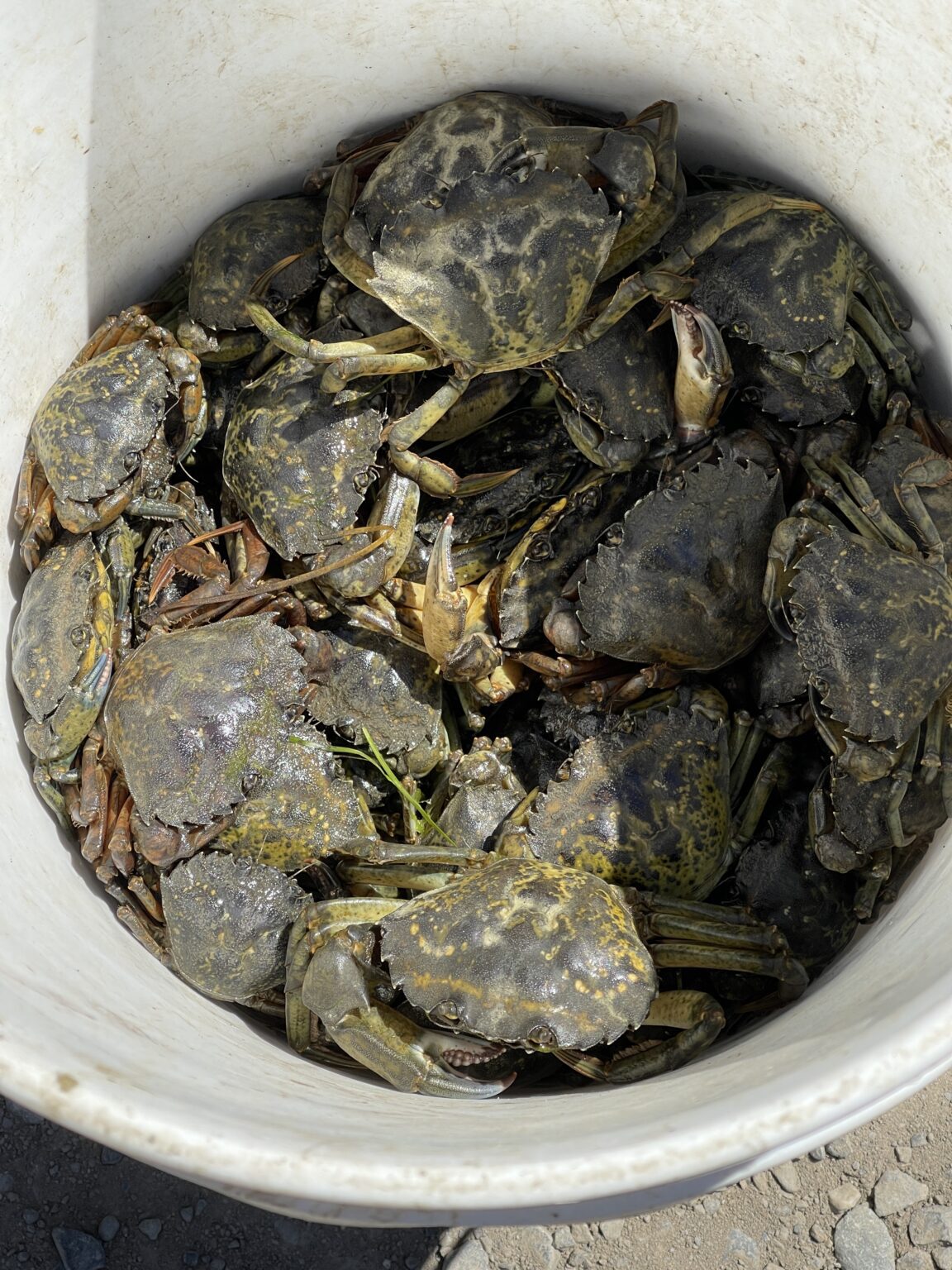Two European green crabs (EGC) have been identified in Chuckanut Bay this summer, prompting significant emergency response to track the spread of the highly invasive species.
Like cockroaches and other pests, they reproduce rapidly, so when one is identified, the European Green Crab (EGC) Incident Command tries to respond quickly.
“These are the new kids on the block, and a lot of the native species just don’t identify them as prey,” EGC Incident Commander Allen Pleus said Wednesday. “They have a much better chance of reproducing, becoming exponentially large, and then outcompete the native species in population and food sources.”
The first crab, an older female crab, measured 77 millimeters in size and was identified by volunteers from the Washington Sea Grant (WSG), initiating a rapid response protocol.
After the first identification in late July, the Washington Department of Fish and Wildlife (WDFW) deployed more than 150 traps across the northern portion of Chuckanut Bay, trapping a second crab: a younger male measuring 59 millimeters in early August.
“This low capture rate despite heavy trapping effort is a positive sign that green crab numbers remain low in this area,” according to a WDFW press release about the response. “It’s also an example of the effectiveness of both the WSG Crab Team’s community science monitoring work, and WDFW’s rapid response capabilities.”
These were the first crabs spotted in Chuckanut Bay since 2019, when WDFW detected three crabs during assessment trapping.
“It’s always a concern when we find European green crab, particularly if they’re within a certain area where we haven’t detected them before,” Pleus said. “We’re very concerned about the European green crab anywhere within the Salish Sea or on the coast.”
Despite the concern, Pleus said it’s not surprising to find a couple of crabs throughout the waters in North Puget Sound.
“We know that the larvae of this species is broadly distributed within northern Puget Sound, so turning up a few here and there is not a surprise — it’s actually sort of expected,” he said. “If we find that there are more than a handful in that location, then we start ramping up our efforts.”
The first green crabs were detected in the region in late 2019, when one was discovered in a Lummi Nation Sea Pond. Since then, the population has exploded, leaving the Lummi drowning in more than 70,000 crabs in 2021.
In November, the Lummi Tribe’s Business Council declared a “Green Crab Disaster” and established a task force to combat the problem.
Lummi Declaration of a European Green Crab Disaster
“The invasive EGC is a voracious, hardy, highly adaptable predator and habitat modifier, and is considered one of the most destructive aquatic invasive species in the world,” the disaster declaration said. “The proliferation of EGC on reservation tidelands may lead to devastating impacts of clam and oyster populations, eelgrass beds and the juvenile salmon that rely on them, and communities of native crab species, including juvenile Dungeness crab.”
In mid-January, Governor Jay Inslee followed suit, issuing an emergency proclamation.
The EGC Incident Command has removed more than 138,000 crabs from Washington waters so far this year, though scientists expect to see significantly more before the year’s end.
“Warmer water conditions lately have made conditions very attractive and supportive of these green crabs making a larger push into our state,” Pleus said. “We haven’t seen a whole lot of young of the year showing up at this point, so they may not have had a good settlement in this last winter, but that’s to be determined at this point.”
Once established, European green crabs can be incredibly destructive to local habitats, obliterating seagrass beds, razing marsh habitats and devouring shellfish.
Pleus said the warming waters near Bellingham “seem to be a very, very good habitat for them.”




